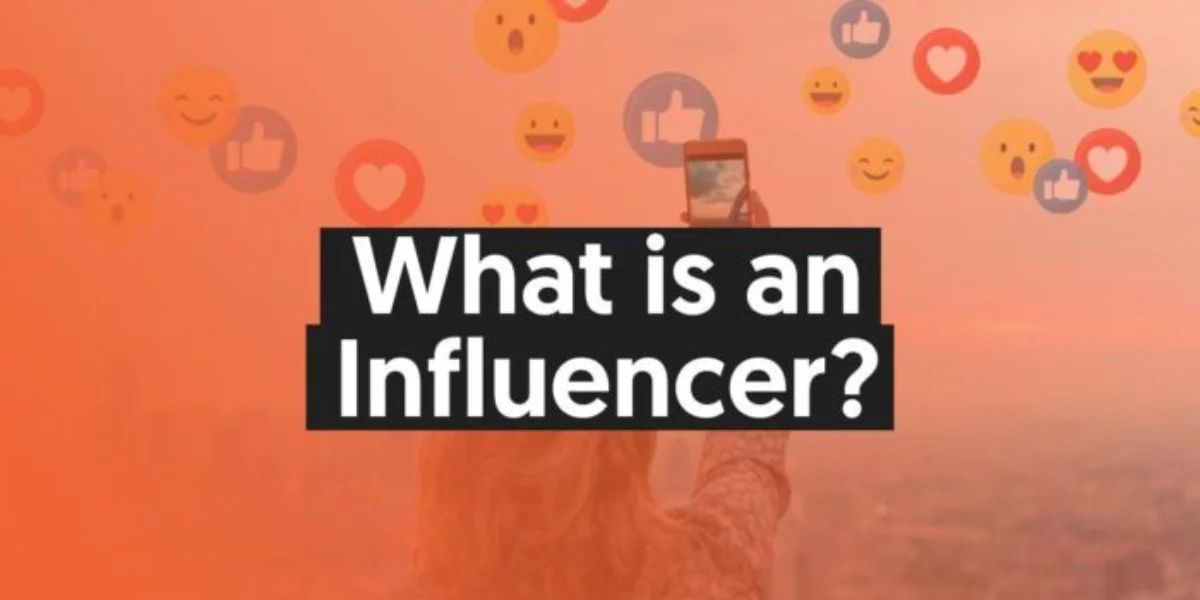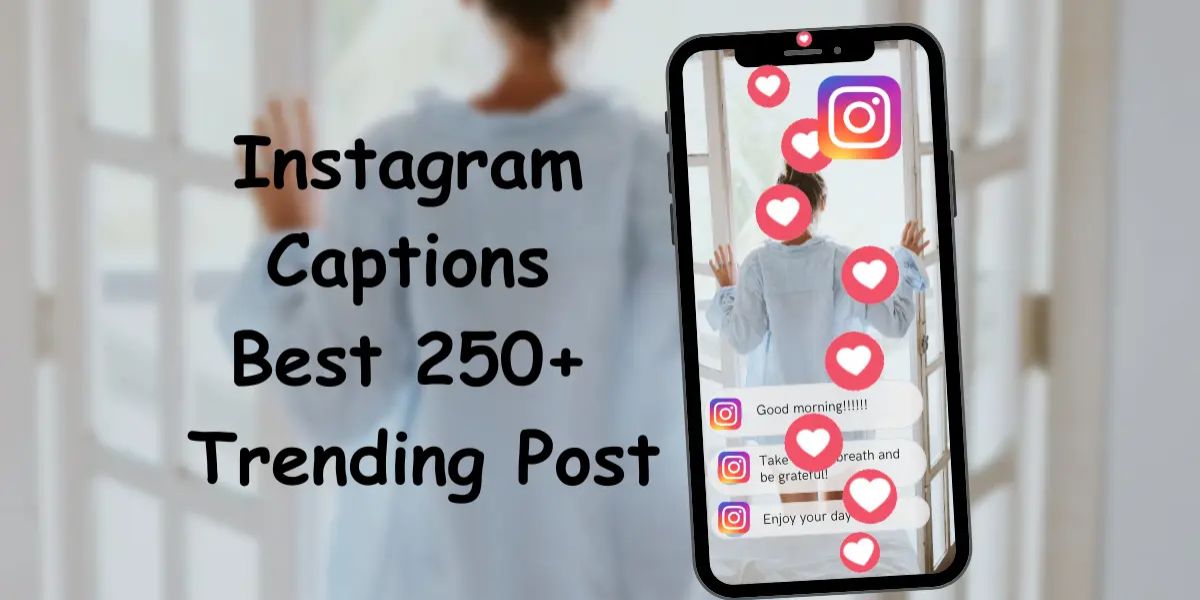what is an influencer: In this digital age, the word “influencer” has come to embody social media, marketing, and branding. But just what is an influencer? And what makes them so determined to influence our buying choices and online actions? In this long article, we will probe deeper into the world of influencers, look into the different subcategories, study how they engage audiences, and understand their influence on consumer behavior and trends.
This guide will serve as a good introduction to the exciting world of influencer marketing, whether you are a company looking to work with influencers or just an inquisitive person wanting to learn more about them.
Types of Influencers & Their Roles

An influencer is defined based on his spills, reach, and activity in a niche or platform. Under the responsibility of influencing audiences, the following are the various types of influencers:
1. Mega-Influencers:
These are usually individuals such as global celebrities having a following of millions, generally above a million. The reach is extended as the influencers influence a wider audience. Examples include Hollywood and Bollywood actors, famous musicians, and sports stars.
2. Macro Influencers:
Macro influencers are those with more than 100,000 but less than a million followers, whereas, among their thousands, they do reach the masses but have a poor knack for focusing niches compared to mega-influencers. Industry experts, majorly popular bloggers, and influential YouTubers, among others, are just examples.
3. Micro-Influencers:
They have a following of 10000 to 100000 individuals. Strong engagement and the nearness of their community are the main aspects concerning them. Micro-influencers focus on particular categories like travel, beauty, fitness, or tech. Their testimonies and suggestions are authentic to people.
Nano Influencers: These have communities of less than 10,000 followers but high engagement in that genuine community. They usually associate with local businesses or niche brands; people value their relevance and genuineness.
4. Social Media Influencers:
Social media influencers mainly use social sites like Instagram, TikTok, Twitter, and LinkedIn. They create posts and videos with good engagement or grab attention with trends for their audience on boards.
Every type of influencer has something unique to bring to the marketing ecosystem: from broad reach and high visibility to targeting a niche and genuine engagement- they all have capabilities that brands can use for developing marketing strategies.
How Influencers Build & Engage Their Audience

It takes time for influencers to amass followers and gain engagement with their audience. Authenticity, consistency, and proactive content are some of the steps involved in building the audience. Here are the finer details:
1. Authenticity:
The bedrock of success. When influencers publish relatable, genuine content, they nurture a loyal following. This means open conversations about lifestyle, value, or opinion versus overtly commercial posts that may ostracize their audience.
2. Consistency:
Consistent content keeps influencers on the top of their audience’s mind. Whether daily on Instagram Stories or weekly on YouTube, a regular posting schedule is key for maintaining followers. A high level of consistency related to quality and style of content is also important so that followers always know what to expect.
3. Engagement:
Engaging users is important. Influencers reply to comments, organize Q&A sessions, and collaborate to get new ideas for content with their followers; all of this creates an interactive feel, building a community, with followers feeling valued and heard.
4. Quality Content:
A must-have! Quality refers to the aesthetics of images, sound and editing quality of videos, and informative vs. entertaining features of post content. A good-quality camera and/or other well-suited equipment are essential elements used by influencers in post-production software to improve their content into the final package.
5. Niche Influence:
Successful influencers almost always attract a specific audience for their niche, whether that be fitness, beauty, traveling, or technology.
6. Collaborations and Partnerships:
Working with other influencers or partnering with brands can widen their reach. Collaborations introduce the influencers to new audiences, adding credibility through association with reputable brands.
7. Trends and Challenges:
This can be taken one step further through leveraging trends and participating in challenges to remain fresh to their audience. With everything from viral TikTok dances to trending hashtags on Instagram?
With these factors influencing their efforts to establish a solid, loyal audience that trusts their recommendations, the anticipation of their content will follow.
Influencer Marketing: How Brands Work with Influencers

Influencer marketing is one of today’s most effective channels for brands to establish an authentic relationship with their audience. This is a run-through of how most brands work with influencers:
1. Identifying the Right Influencers:
The first step is to search for influencers that an audience will likely reach together, emerging from interests such as follower count, rate of engagement, and niche.
2. Targeting Specific Objectives:
Brands should also articulate what they want to accomplish with every campaign in influencer marketing. Clear objectives determine success strategy measurement, whether it is simply raising awareness of a brand, increasing sales, or promoting a new product.
3. Making Genuine Associations:
Genuineness is all in influencer marketing. Both the brand and the influencer collaborate in creating authentic content that resonates with an influencer’s audience. Sometimes, they give them a free hand on presenting it in a style that best fits.
4. Multi-platform Leverage:
Brands can use influencers across many platform sites, including Instagram, YouTube, TikTok, and blogs. This would broaden reach and engage wider audiences.
5. Sponsored Posts and Reviews:
It was the most identifiable kind of marketing activity- sometimes called sponsored posts, where influencers would create content containing the brand’s products or services. Product reviews and unboxing videos can also be very popular because they offer honest feedback and demonstration to the audience.
6. Giveaways and Contests:
Influencers usually do giveaways or contests on behalf of the brand. Usually, they create a lot of buzz and get people/followers excited about the brand, making it a great tactic in making followers engage with the brand ”by following the brand’s social media pages or using certain hashtags.”
7. Tracking and Measuring Outcomes:
Brands use different metrics to measure the impact of influencer campaigns, including engagement rates, website traffic, sales conversion, and, ultimately, the sentiment of audience responses. The authenticity by which all communications reach targeted audiences will be achieved through the influence of well-thought-out influencer campaigns.
In this way, their goals of building strong relationships with audiences may be realized.
The Impact of Influencers on Consumer Behavior & Trends
Most of them are influencers in trend-setting huge populations. The following are specific ways product purchasing behavior by consumers is shaped and influenced by them:
1. Trust and credibility:
Influencers build trust with audiences mainly via authenticity and relatability. Therefore, when an influencer attests to a certain product or service, he will likely appeal to fans who take the word straight from the horse’s mouth rather than rely on ad sources.
2. Here is where an influencer gets social proof:
a phenomenon where people suddenly follow the actions of others. Seeing an influencer using the same product, followers start to feel a certain kind of factuality for them to have to try themselves.
3. First movers:
They usually adopt changes in products, styles, or technologies very early. The rest are carried along by those influencers in trendsetters. As beauty influencers would say, anything new in their field, be it a technique or product, is quickly embraced by the rest of the beauty industry.
4. Interaction and Engagement:
Unlike the media, influencers engage the end user directly. This creates a sense of belonging, which bonds consumers, making them more receptive to recommendations.
5. Personalizing each item:
Influencers can personalize their content to appeal to specific audiences. This increases the relevance of the latter’s recommendations, making the person more interested.
Emotional connectivity – The personal story of the influencer forms an emotional base by imparting their experiences. This emotion can strongly influence the buying behavior of the followers since they are emotionally attached to these recommendations.
With all these aspects, consumer behavior is sure to be influenced by influencers and the acceptance of trends.
Challenges & Ethical Concerns in Influencer Marketing
Influencer marketing comes with its fair share of challenges and benefits as follows:
1. Transparency and Disclosure:
The ethical concern here arises out of transparency vis-a-vis sponsored content. Influencers need to disclose whenever there is a paid partnership for the risk of losing trust with their audience. Otherwise, defaming the influencer for misleading his followers becomes the next trick.
2. Authenticity Vs. Commercialism:
With the rise in popularity of influencers, these influencers are often pressured to commercialize their content. The line between authenticity and commercialism can be so thin that negative promotion can lose its followers.
3. Fake Followers & Engagement:
Some influencers inflate their follower engagement with bots or paid services. This fraudulent activity confuses brands by making them think that campaigns do deliver their promise; hence, the effectiveness of that campaign is compromised.
4. Mental Health-Burnout:
Insufficiently productive influences can cause serious mental health issues owing to responsibilities like the drawn-out pressure of content generation and maintaining a public image. Burnout, anxiety, and stress are common manifestations among many influencers due to their presence on social media.
5. Sensitivity to Culture:
Influencers must be aware of culturally sensitive topics that may offend or alienate their respective audiences. Culturally insensitive remarks and/or actions can easily ruin reputations and trigger counter-responses.
6. Regulatory Compliance:
Advertising influencers fall under the purview of laws, which differ from country to country. Influencers and brands must stay updated on the law and ensure compliance to avoid penalties and issues.
These challenges and ethical concerns must be kept in check for the influencer marketing ecosystem to remain ethical and marketable.
The Future of Influencers & Emerging Trends
Looking ahead into the future of influencers, we see a vibrant mix of change, innovation, emerging trends, and evolving consumer behaviors. Brands are slowly beginning to value narrowly angled audiences with intense engagement, whereby nano and micro-influencers get more prominence.
Video content and short-form videos, especially on channels like TikTok and Instagram Reels, will utilize a lot of influence and power as mechanisms to create thrilling and shareable content. CGI influencers or virtual influencers are gathering steam in the industry, thus giving a new opportunity for creative and brand partnership interactions in a futuristic way. Social responsibility and sustainability are coming into focus with influencers promoting ethical and eco-friendly products.
It is anticipated that long-term relationships between brands and influencers will become a norm, thus engendering deeper connections and increasingly authentic endorsements. Data and data-driven strategies will be ubiquitous, and brands will learn to analyze the effectiveness of their influencer campaigns and sharpen their approach.
Lastly, diversity and representation will draw more attention to influencer marketing to help brands reach a broader audience. All these trends are a testament to the transformation in influencer marketing, whereby innovation and flexibility are prerequisites for sustained success.
Conclusion
Platforms run by influencers have reshaped how brands market their products by providing brands with an original and fruitful approach to connecting with interested consumers. The digital marketing ecosystem runs through influencers because they establish genuine connections while directing trends and influencing consumer choices. The power of influencer marketing allows brands to succeed in business by grasping the different influencer types alongside their strategies and difficulties.






